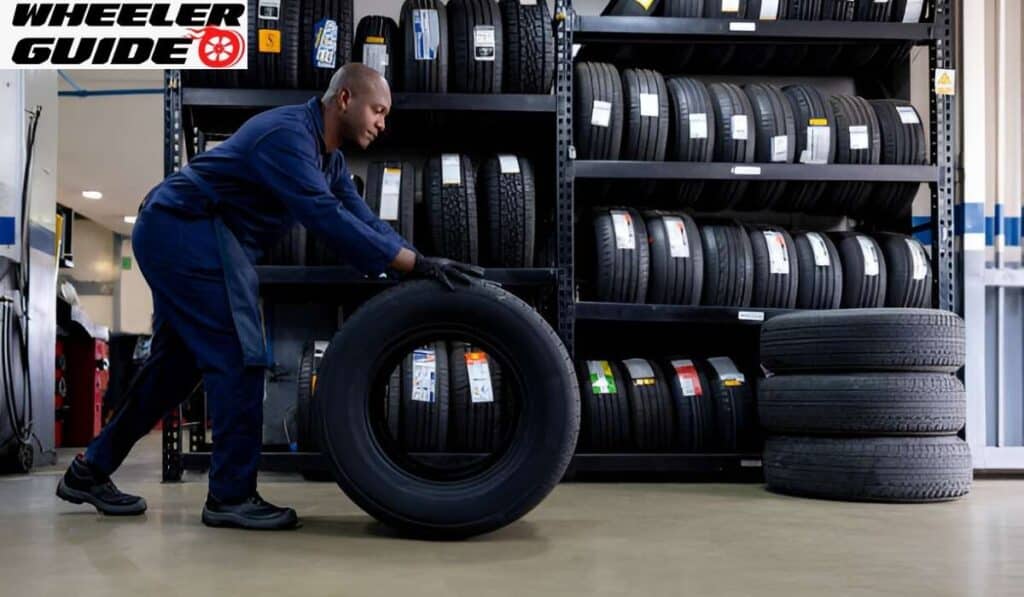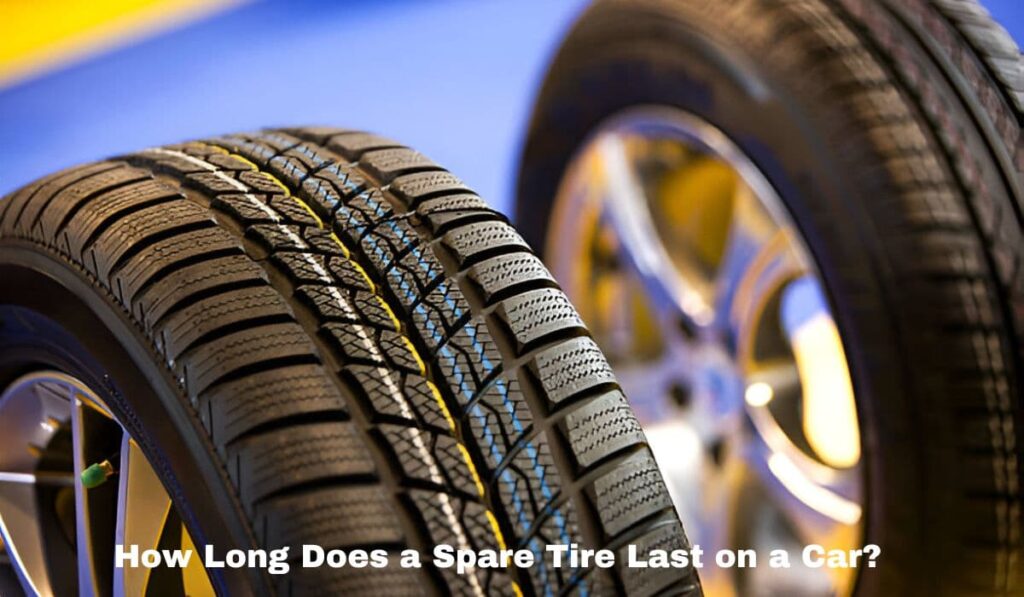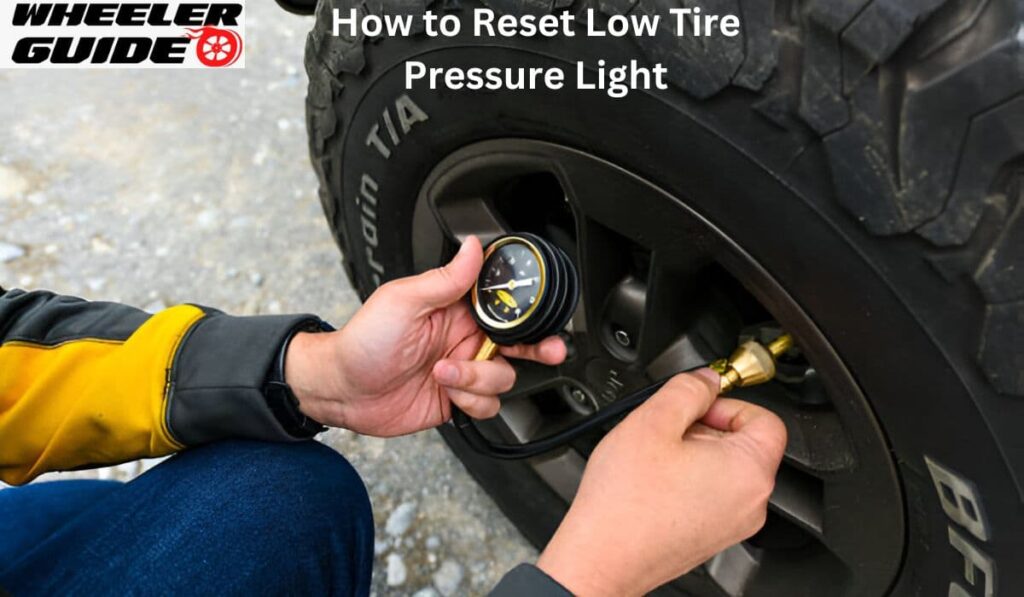Tires are the only part of your car that touches the road. They play a key role in safety and performance. Sadly, many drivers overlook their tires until something goes wrong. Tire problems and causes can lead to dangerous driving conditions, but understanding how to address them can keep you safe on the road.
Knowing how to spot the symptoms of worn tires and common tire issues can save you money and help prevent accidents. From uneven wear to loss of tire pressure, many factors can affect your tires. Fortunately, most of these tire problems are easy to identify and fix if you know what to look for.
This guide will cover ten common tire problems and causes, and how to solve them. You’ll learn how to check your tires, identify signs of internal tire damage, and when it’s time to visit a tire shop for professional repairs. By the end, you’ll have the know-how to keep your tires in top shape for years to come.
Understanding Tire Wear Patterns
Tire wear patterns can tell a lot about your vehicle’s condition and your driving habits. These patterns can also reveal tire problems and causes, such as improper inflation or misaligned wheels.
Over-Inflation Wear
Overinflated tires show excessive wear in the center of the tread, which is a common tire wear problem. The middle section bulges out due to over-inflation, causing it to carry more weight than the outer edges.
Signs of over-inflation include:
- A smooth, worn strip down the center of the tire
- The outer edges of the tread remain less worn
How to fix over-inflation:
- Check tire pressure regularly and adjust to the manufacturer’s recommended PSI
- Use a reliable tire pressure gauge to monitor the air in your tires
Overinflated tires are at a lower risk of blowout, but they can reduce traction and cause a harsher ride. Proper inflation is key to avoiding tire issues.
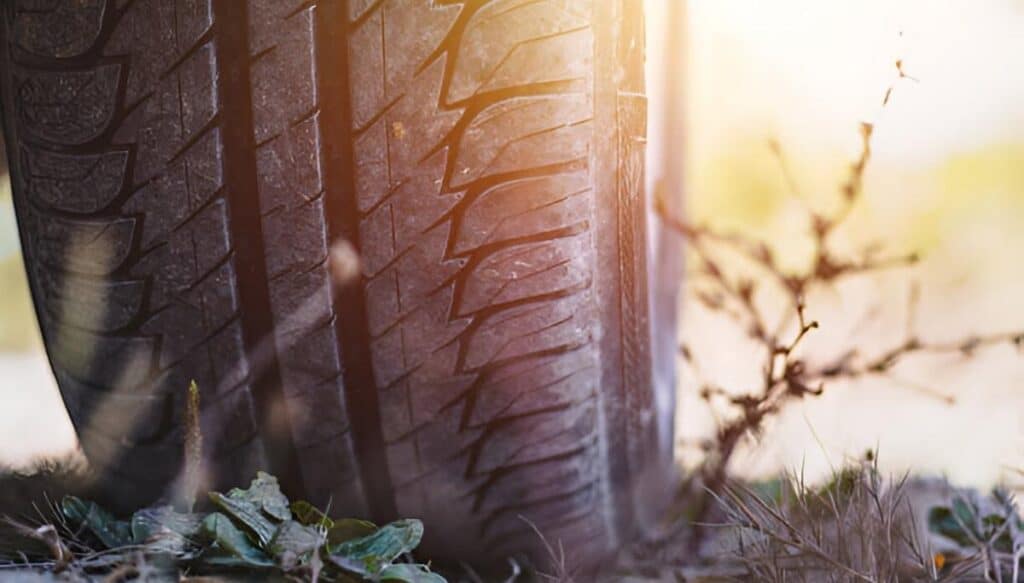
Under-Inflation Wear
Underinflated tires display wear on the outer edges of the tread. This is due to the tire’s edges bearing more weight when not properly inflated, which can lead to dangerously low tire pressure.
Symptoms of under-inflation wear:
- Worn outer edges of the tread
- The center of the tread remains less worn
How to fix under-inflation:
- Check tire pressure monthly and inflate to the recommended PSI
- Inspect your tires for leaks or signs of internal tire damage
Under-inflated tires can overheat, leading to reduced fuel efficiency and increased risk of a tire blowout.
Uneven Wear Due to Misalignment
Misaligned wheels can cause uneven tire wear patterns, with more wear on one side of the tire than the other. This type of tire wear is common and can lead to premature tire failure.
Signs of misalignment wear:
- One side of the tread wears faster than the other
- Feathering or scalloping of the tread may appear
How to fix misalignment:
- Get a professional wheel alignment to ensure the wheels are properly aligned
- Check your suspension components for wear and rotate your tires regularly
Proper alignment will prevent uneven wear, ensuring better handling, fuel efficiency, and longer tire life.
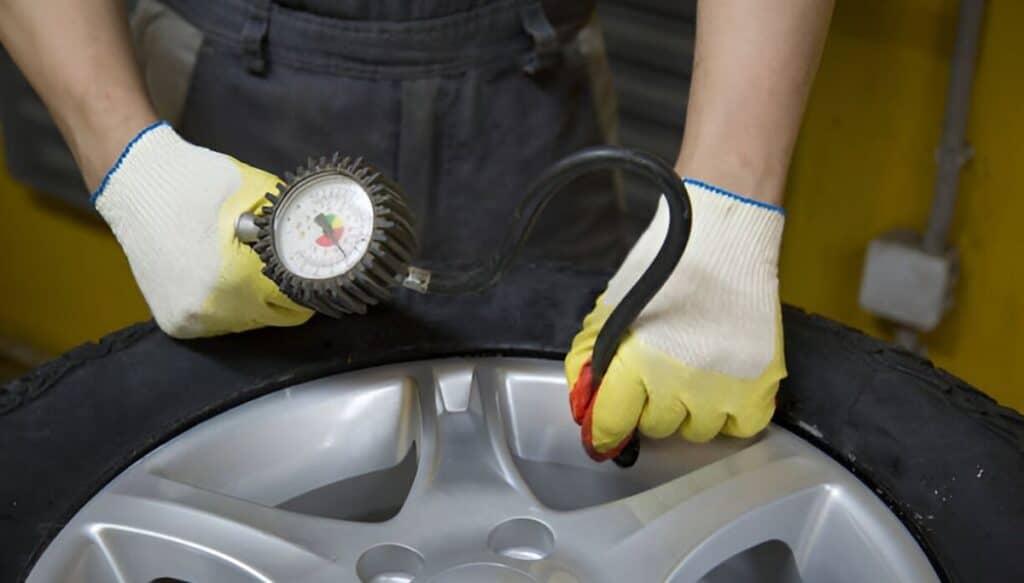
Maintaining Proper Tire Pressure
Maintaining the right tire pressure is critical for your vehicle’s safety, performance, and fuel economy. Checking your tires regularly can prevent common tire problems and extend their lifespan.
Checking Tire Pressure Regularly
It’s easy to check your tire pressure with a gauge. Simply remove the valve cap, press the gauge onto the valve stem, and read the pressure level. Compare the reading with the recommended pressure, typically found on a sticker inside the driver’s door frame.
- Check tire pressure when tires are cold, as driving increases their temperature and affects the reading.
- Aim to check your tire pressure at least once a month.
Common signs of loss of tire pressure include:
- Poor handling or steering
- Reduced fuel efficiency
- Uneven wear
Keeping your tires properly inflated can prevent these issues, ensuring a safer and smoother ride.
Adjusting Tire Pressure for Weather Changes
Temperature fluctuations can cause significant changes in tire pressure. Cold weather leads to lower pressure, while hot weather can increase it. A 10°F drop in temperature can result in a loss of 1-2 PSI.
In colder weather, add 3-5 PSI to offset the pressure drop and maintain proper inflation. In the summer, avoid over-inflation by checking your tires in the morning when they’re cool.
Addressing Punctures and Leaks
Tire punctures and leaks can happen at any time, often due to road debris. Quick action can prevent more severe damage and ensure that your tires remain safe to drive on.
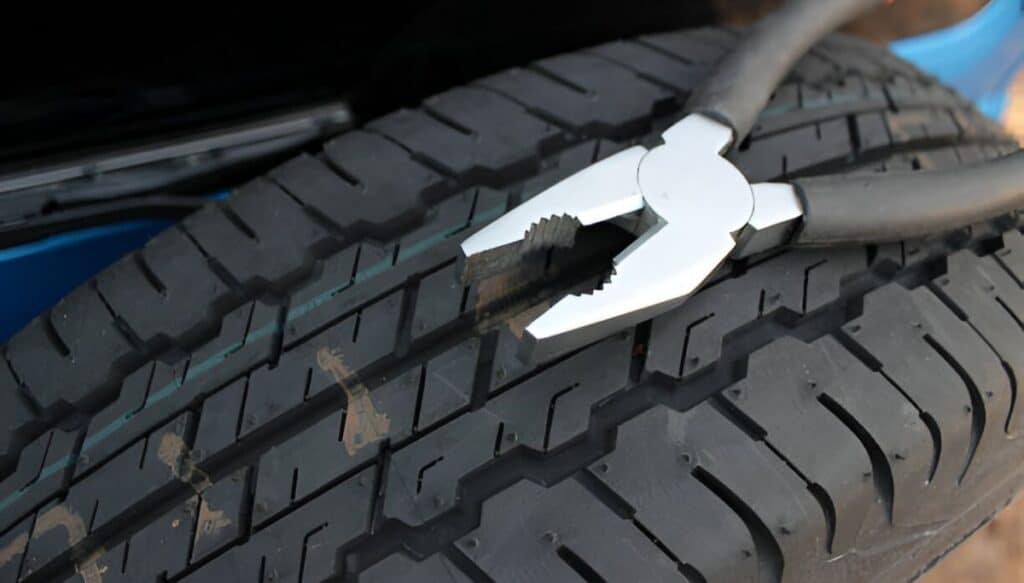
Temporary Fixes for Small Punctures
For small punctures, a tire repair kit can be a temporary fix. These kits often include a sealant and a small pump.
Steps to repair a small puncture:
- Locate the puncture and remove any object stuck in the tire.
- Apply the sealant.
- Use the pump to reinflate the tire.
This is only a temporary fix, so be sure to visit a tire shop to have the damage properly addressed.
Seeking Professional Repairs for Larger Damage
Large punctures or sidewall damage need to be addressed by a professional. Tire shops can repair many tread punctures, but certain tire damage types are beyond repair:
- Holes larger than 1/4 inch
- Sidewall punctures
- Multiple punctures close together
In these cases, replacing the tire is often the safest option.
Routine Tire Maintenance Measures
Routine tire maintenance is essential to prevent common tire problems and ensure the longevity of your tires.
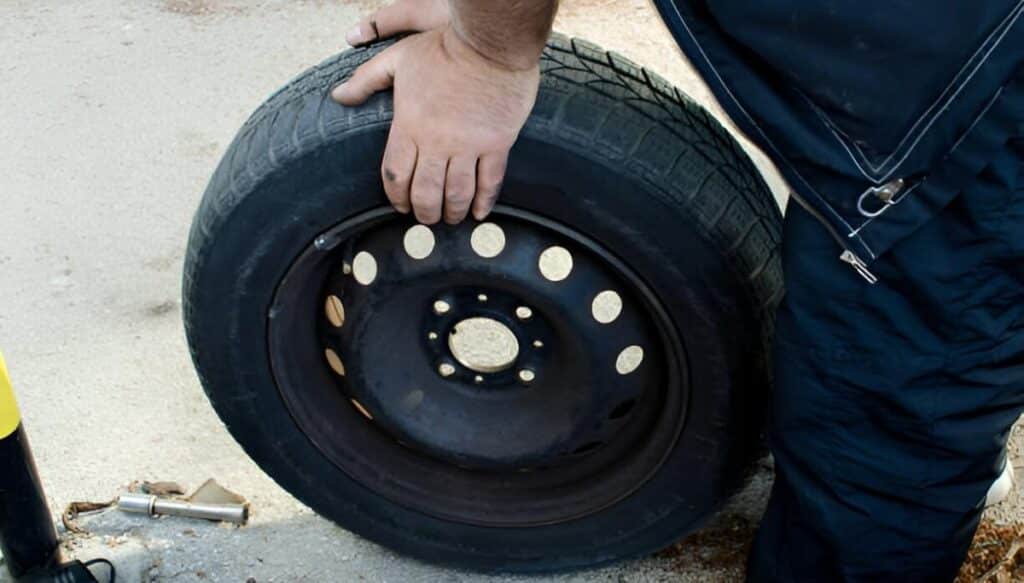
Regular Tire Rotation
Rotating your tires helps prevent uneven wear and ensures that all tires wear evenly. Tire rotation should be done every 5,000 to 8,000 miles, depending on your vehicle and driving habits.
Common rotation patterns include:
- Front-to-back for rear-wheel drive vehicles
- X-pattern for all-wheel drive vehicles
Regular tire rotation ensures better handling and improved fuel efficiency.
Balancing Tires for Even Wear
Tire balancing is necessary to ensure weight is evenly distributed around each tire. Unbalanced tires can lead to vibration, uneven wear, and reduced fuel efficiency.
Signs of an unbalanced tire include:
- Vibration in the steering wheel
- Uneven tire wear
Tire balancing should be done every 5,000 to 6,000 miles or when installing new tires.
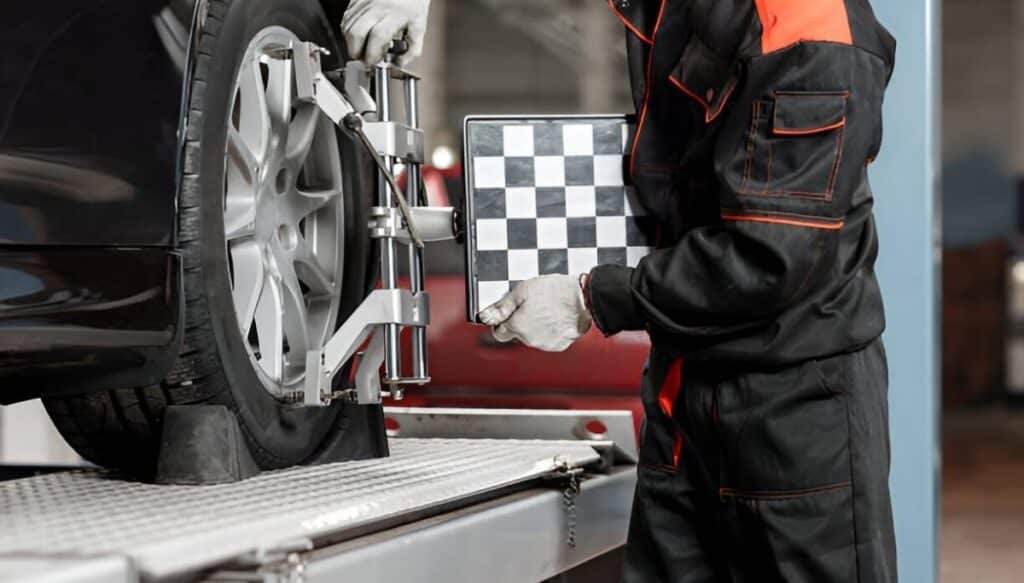
Wheel Alignment Checks
Regular wheel alignment checks ensure your tires wear evenly and your vehicle handles properly. Misaligned wheels can cause rapid tire wear and affect your vehicle’s fuel economy.
Signs of misalignment:
- The vehicle pulls to one side
- Off-center steering wheel
- Uneven tire wear
Alignment should be checked every 6,000 miles or at least once a year.
Frequently Asked Questions
What are the most common reasons for tire blowouts, and how can they be prevented?
Tire blowouts often result from underinflation, overloading, or road debris. To prevent blowouts, regularly check tire pressure, avoid overloading, and inspect your tires for damage.
How can I accurately assess and maintain proper tire pressure?
Use a tire pressure gauge to check your tire pressure when the tires are cold. The recommended pressure is usually found inside the driver’s door frame.
What steps should be taken to fix a damaged tire?
Small punctures can be temporarily repaired using a tire repair kit, but larger damage or sidewall punctures should be handled by a professional tire shop.
What is the optimal tire tread depth?
The optimal tread depth is 4/32 inch or more. Tires with less than 2/32 inches of tread are considered unsafe and should be replaced.
What are the primary types of tire damage that technicians encounter?
Technicians often encounter punctures, sidewall damage, and uneven wear. Regular tire checks can help catch these issues early, ensuring safe driving.
